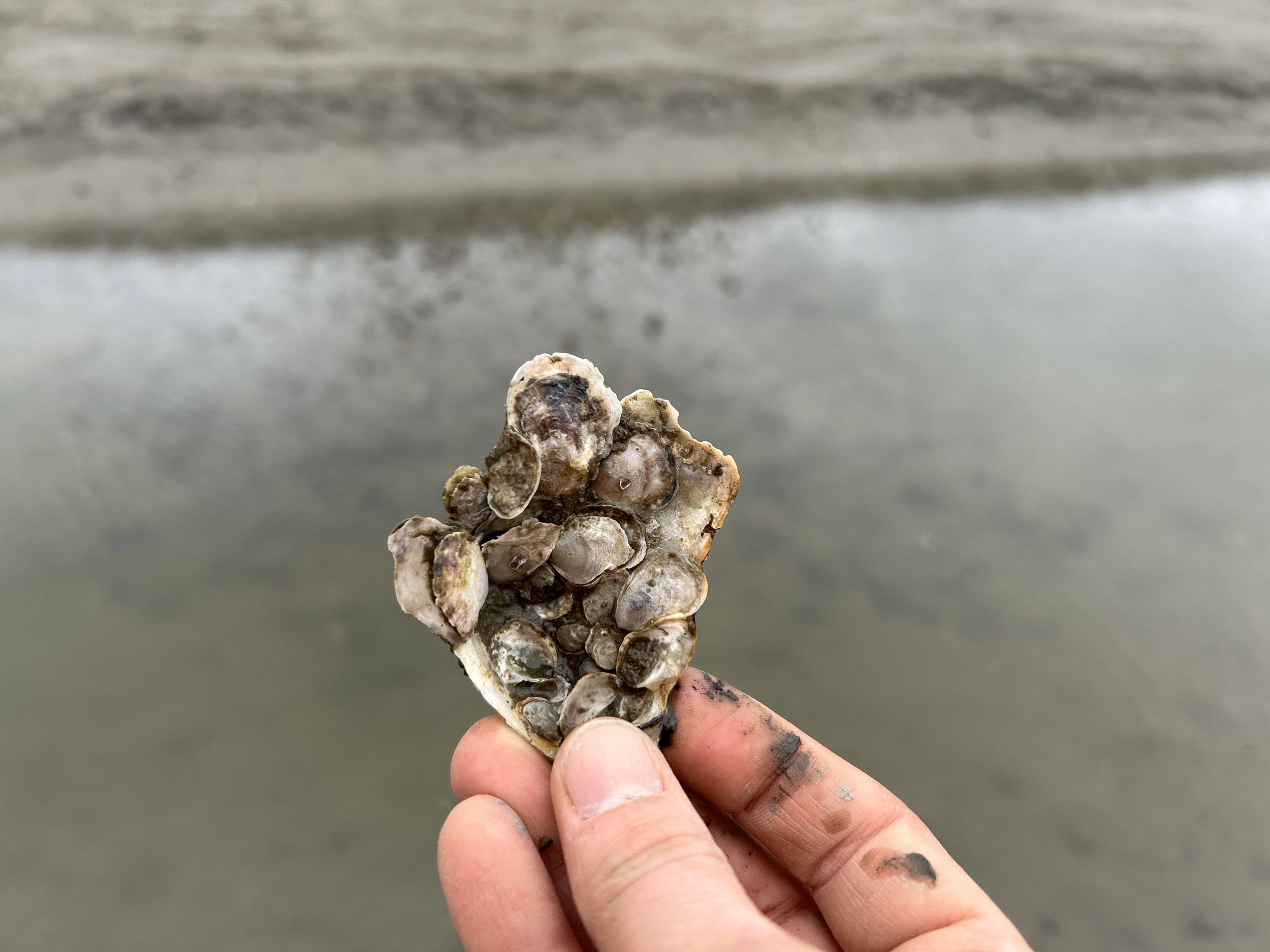By Catalina Burch, Washington Sea Grant Marc Hershman Marine Policy Fellow
The Shellfish Growers Resiliency Fund (the Fund), was created as part of the Supporting Oyster Aquaculture and Restoration (SOAR) program, by The Nature Conservancy (TNC) and The Pew Charitable Trusts (Pew), to advance the development of a resilient and sustainable shellfish industry that provides benefits to marine ecosystems and local communities. Recently, the SOAR program announced 47 new recipients of the Fund, providing a total of $898,000 to projects in 18 coastal states, including 4 awards to projects in Washington.
Washington State is the largest producer of farmed shellfish (oyster, clams, and geoducks) in the United States. Responsibly managed shellfish farms benefit the economy and the environment. Shellfish farms are often in rural coastal communities and serve as an important source of revenue and jobs. In addition to their economic value, these hard-shelled creatures hold a soft spot in the hearts of many. As we care for them, shellfish care for us by providing important ecosystem services.
Thriving Olympia oyster bed at restoration site. © Catalina Burch/TNC
An oyster farm may provide habitat for marine organisms and improve water quality, with each oyster filtering approximately 50 gallons of water per day. Oysters also provide a sustainable source of protein, requiring no additional water or feed to grow.
The SOAR Resiliency Fund supports innovative projects to strengthen the resiliency of the aquaculture industry in the face of environmental change. Keep reading to learn more about the innovative SOAR-funded projects in Washington State.
Composite Recycling Technology Center (CRTC): New Paradigm for Highly Resilient and Eco-Friendly Oyster Farming
· What: Testing the use of recycled carbon fiber cables made from wind-turbine and aerospace industry scrap to create a sustainable and economically viable farming material.
· Why: Traditionally, oyster farms use plastic-coated steel and polypropylene lines which shed microplastics into the marine environment and create an actual or perceived risk of marine mammal entanglement. This new technology would increase the sustainability and efficiency of farming practices.
· How: CRTC will install carbon fiber cables on an oyster farm and monitor the cables’ durability and usability. The final report produced by CRTC will serve as a tool for stakeholders and the shellfish industry to inform the adoption of this new technology at scale.
Naturally occurring Olympia oyster cluster © Debbie Preston Ross/NWIFC
Hama Hama Oyster Company: Specialty Oyster Larval Setting Program
· What: Increasing the production of native Olympia oysters and workforce development through the mentorship of farm interns.
· Why: Relatively few shellfish farmers in Washington grow the native Olympia oysters because hatchery-produced juvenile Olympia oysters are difficult to find and expensive to purchase. This project will allow the Hama Hama Oyster Company to test out Olympia oyster production with the end goal of eventually providing juvenile Olympias to small oyster companies nearby to grow and sell commercially.
· How: SOAR funds will be used to grow Olympia oysters from larvae to juvenile size, and then track survival and growth to maturity. If successful, Hama Hama Oyster Company will use this pilot program to increase the number of Olympia oyster seed and marketable product available to both shellfish farmers and consumers.
Stillaguamish Tribe of Indians: Triangle Cove Mixed-Use Shellfish Mosaic
· What: Enhancing a Tribal shellfish growing area in a pocket estuary of Port Susan Bay. The project has three goals: restore shellfish beds and associated habitat structure, provide traditional and nutritious food for Tribal members for harvest, and eventually produce shellfish for local markets.
· Why: Water quality has declined in Port Susan Bay, leading to the closure of shellfish harvest zones in much of the area. However, the Stillaguamish Tribe has stewarded Triangle Cove, maintaining a thriving estuary with harvestable shellfish. To further support recovery of the Triangle Cove ecosystem (post-Spartina eradication) and to meet objectives of the 2011 WA State Shellfish Initiative, this project aims restore native Olympia oysters and increase shellfish harvest opportunities for Tribal members.
· How: The project will deploy juvenile Olympia oysters on shell substrate, along with mature Olympias, to establish a local population of native oysters. Manila clam seed will also be spread to enhance a portion of the growing area. The site will be monitored for the survival and growth of the juvenile shellfish and the natural settlement of native oysters.
Juvenile Olympia oyster spat growing at restoration site. © Molly Bogeberg/TNC
Willapa Grays Harbor Oyster Growers Association (WGHOGA): Seed Bag Pilot Recycling Program
· What: Testing a recycling system for bags used to grow oysters on tidelands.
· Why: Mesh bags are used to overwinter oysters, and are typically disposed of in a landfill. A typical company generates tens of thousands of disposable bags every year. This project would create a recycle and reuse pathway to reduce the amount of waste produced by farming operations.
· How: WGHOGA will purchase a bailing system to transport bags from a centralized drop point to the recycling facility. The recycled plastic will be broken down into plastic pellets for reuse.
*SOAR Program Partners: The Nature Conservancy, The Pew Charitable Trusts, Builders Initiative, National Fish and Wildlife Foundation, the U.S. National Oceanic and Atmospheric Administration, and the U.S. Dept of Agriculture
Feature image: Juvenile Olympia oysters. © Molly Bogeberg/TNC






















